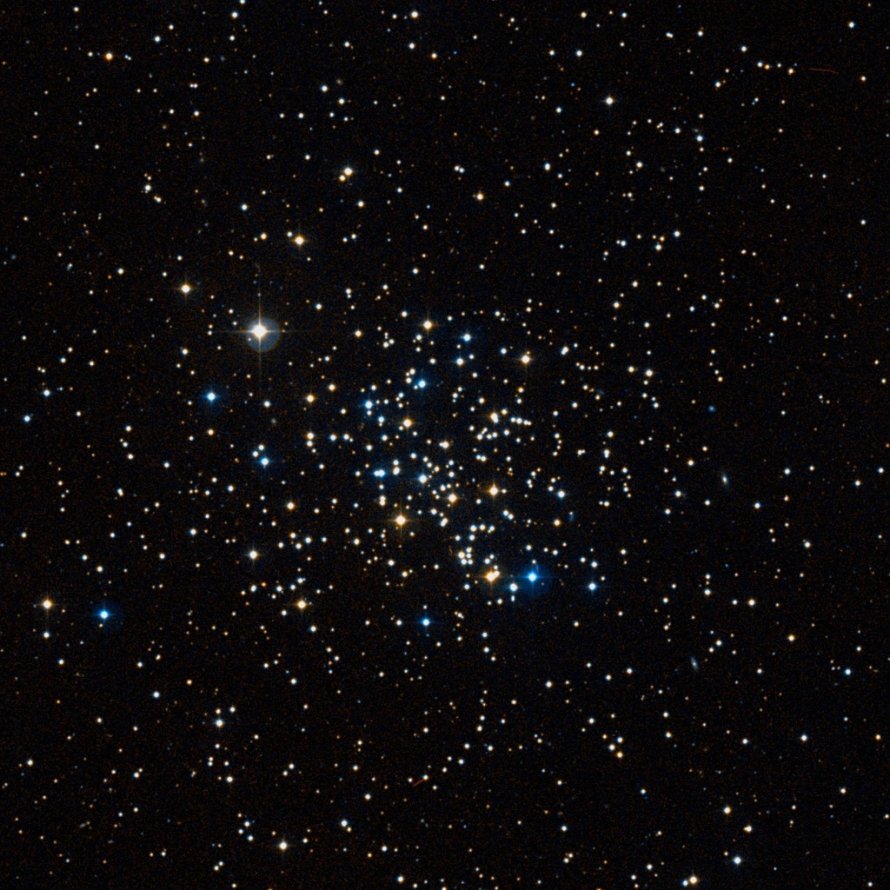M67 (NGC 2628) - King Cobra Cluster
Messier 67 (NGC 2628), also known as the King Cobra Cluster, is an open cluster located in the constellation Cancer, in the Orion Arm of the Milky Way Galaxy in the Local Group of galaxies. M67 is 2700 light years away from Earth.
M67 is best viewed during early spring, is magnitude 6.1, and can be viewed with binoculars. M67 is 30' in apparent size. For reference, the full moon is 30'.
Observing difficulty: Intermediate
- Name:
- King Cobra Cluster
- Type:
- open cluster
- Constellation:
- Cancer
- NGC or IC:
- NGC 2628
- Magnitude:
- 6.1
- Viewing:
- binoculars
- Size:
- 30'
- Distance (light years):
- 2700 LY
- RA:
- 8h 50.4m
- Dec:
- 11 49'
- Season:
- early spring
- Milky Way location:
- Orion Arm
- Galaxy group:
- Local Group
- Messier Marathon #:
- 28
* The naked eye can see up to magnitude ~7-8 objects under ideal dark sky conditions.
A Rich Old Open Cluster in Cancer
Located within the constellation Cancer, Messier 67 (M67) is one of the most extensively studied open clusters due to its abundance of solar-like stars and its old age. The cluster was discovered by Johann Gottfried Koehler in 1779, though Charles Messier added it to his catalogue later the same year. It's situated approximately 2,800 to 3,200 light-years away from us, making it one of the most distant open clusters observable with the naked eye.
Characteristics of M67
M67, also known as NGC 2682, is known for its age and its sun-like stars. It's one of the few clusters of this kind that have been observed to host stars similar to our Sun in terms of mass, age, and other physical properties, and it is for this reason that M67 has been an essential tool in studying stellar evolution.
The cluster is composed of roughly 500 stars, with a relatively high metallicity similar to that of the Sun. Its age is estimated to be between 3.2 and 5 billion years old, making it one of the oldest known open clusters. Unlike many of its kind, M67 has not dispersed significantly and remains a rich, compact cluster.
Magnitude and Size
M67 has an apparent magnitude of 6.1, putting it right on the threshold of visibility with the naked eye under optimal conditions. The cluster spans about 30 arc minutes in the night sky, approximately the same apparent size as the full moon. This corresponds to a real diameter of around 20 light-years, making M67 one of the larger known open clusters.
Finding and Viewing M67
To locate M67, one must first find the constellation Cancer. The best time to view this constellation is in late winter and spring. M67 is located roughly in line with Alpha and Beta Cancri, about 8 degrees south-east from Delta Cancri, one of the stars of the Y-shaped asterism known as "The Beehive."
Given its relatively high brightness and size, M67 is an excellent target for binoculars and small telescopes. Binoculars will reveal a hazy patch of light while a small telescope will begin to resolve individual stars. Higher-powered telescopes will show a beautiful view of the cluster, its stars spread out across the field of view, providing an impressive sight for any stargazer.
As a rich and relatively undisturbed open cluster, M67 offers a fascinating glimpse into the nature of stellar communities and a snapshot of what our Sun's original stellar neighborhood might have looked like billions of years ago. Its easily accessible location and brightness make it a popular and worthwhile target for amateur astronomers and professionals alike.



